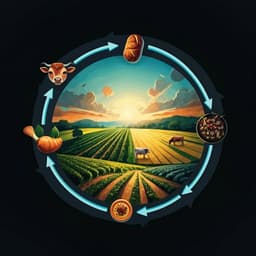
Food Science and Technology
Circularity in Europe strengthens the sustainability of the global food system
H. H. E. V. Zanten, W. Simon, et al.
This groundbreaking research by H. H. E. van Zanten and colleagues reveals that redesigning Europe's food system based on circularity principles could significantly reduce agricultural land use and greenhouse gas emissions while still producing enough healthy food. With the potential to feed an additional 767 million people globally, this study highlights the urgent need for a transition in our food systems for both human and planetary health.
Playback language: English
Related Publications
Explore these studies to deepen your understanding of the subject.







